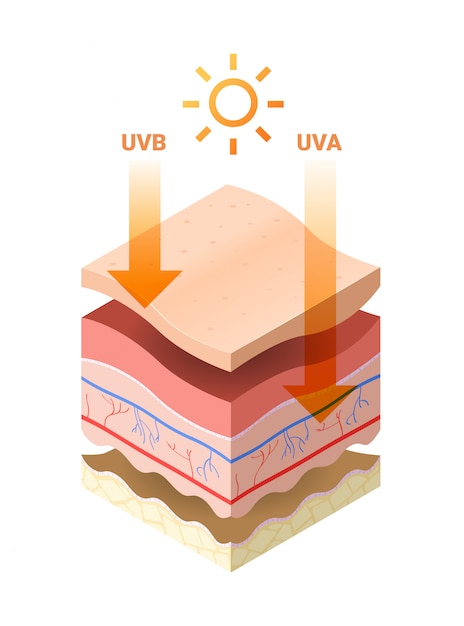Skin Layers: Understand Yours

The human skin is a complex and multifaceted organ, comprising multiple layers that work in tandem to protect the body from external factors, regulate body temperature, and facilitate sensory perception. The skin’s structure and function are intricately linked, with each layer playing a vital role in maintaining overall health and well-being. In this article, we will delve into the anatomy and physiology of the skin layers, exploring their characteristics, functions, and importance in maintaining healthy, resilient skin.
Introduction to Skin Layers

The skin is composed of three primary layers: the epidermis, dermis, and hypodermis. Each layer has distinct characteristics, functions, and cell types, which work together to provide a robust barrier against external stresses, regulate body temperature, and facilitate the exchange of oxygen, nutrients, and waste products. The skin’s layered structure allows for a remarkable degree of flexibility, adaptability, and resilience, enabling it to respond to a wide range of environmental stimuli and maintain homeostasis.
Key Points
- The skin is composed of three primary layers: epidermis, dermis, and hypodermis
- Each layer has distinct characteristics, functions, and cell types
- The skin's layered structure provides a robust barrier against external stresses and regulates body temperature
- The skin plays a crucial role in facilitating sensory perception, immune function, and overall health
- Understanding the skin layers is essential for maintaining healthy, resilient skin and addressing skin-related disorders
Epidermis: The Outermost Layer
The epidermis is the outermost layer of the skin, responsible for providing a physical barrier against external factors such as water, temperature, and pathogens. It is composed of stratified epithelial cells, which are constantly renewed through a process of cell division, differentiation, and desquamation. The epidermis is further divided into several sublayers, including the stratum corneum, stratum lucidum, stratum granulosum, stratum spinosum, and stratum basale. Each sublayer has distinct characteristics and functions, working together to maintain the integrity and health of the skin.The epidermis plays a crucial role in regulating water loss, maintaining skin hydration, and preventing the entry of pathogens and other foreign substances. It is also responsible for producing pigment cells, such as melanocytes, which produce melanin and influence skin color. The epidermis is sensitive to environmental factors, such as UV radiation, temperature, and humidity, and can respond by adapting its structure and function to maintain homeostasis.
| Epidermal Sublayer | Characteristics | Functions |
|---|---|---|
| Stratum Corneum | Outermost layer, composed of dead, flattened cells | Provides physical barrier, regulates water loss, and maintains skin hydration |
| Stratum Lucidum | Clear, translucent layer, composed of tightly packed cells | Provides additional barrier function, regulates water loss, and maintains skin hydration |
| Stratum Granulosum | Layer of granular cells, responsible for producing lipids and natural moisturizing factors | Regulates skin hydration, maintains skin barrier function, and prevents water loss |
| Stratum Spinosum | Layer of polyhedral cells, responsible for producing keratin and other structural proteins | Provides mechanical strength, maintains skin elasticity, and regulates cell growth and differentiation |
| Stratum Basale | Innermost layer, composed of columnar cells, responsible for producing new cells | Regulates cell growth and differentiation, maintains skin renewal, and prevents skin disorders |

Dermis: The Middle Layer

The dermis is the middle layer of the skin, composed of dense connective tissue, blood vessels, nerve endings, and hair follicles. It is divided into two sublayers: the papillary dermis and the reticular dermis. The papillary dermis is the thinner, superficial layer, composed of loose connective tissue, while the reticular dermis is the thicker, deeper layer, composed of dense connective tissue.
The dermis plays a crucial role in regulating body temperature, facilitating the exchange of oxygen and nutrients, and removing waste products. It is also responsible for producing collagen, elastin, and other structural proteins, which provide mechanical strength, elasticity, and firmness to the skin. The dermis is sensitive to environmental factors, such as temperature, humidity, and mechanical stress, and can respond by adapting its structure and function to maintain homeostasis.
Hypodermis: The Innermost Layer
The hypodermis is the innermost layer of the skin, composed of loose connective tissue, adipose tissue, and blood vessels. It is responsible for regulating body temperature, storing energy, and providing cushioning and support to the skin. The hypodermis is also responsible for producing hormones, such as leptin, which influence energy metabolism and body weight.The hypodermis plays a crucial role in maintaining skin health, as it provides the necessary nutrients, oxygen, and structural support for the dermis and epidermis. It is also sensitive to environmental factors, such as temperature, humidity, and mechanical stress, and can respond by adapting its structure and function to maintain homeostasis.
Conclusion and Future Directions
In conclusion, the skin layers are complex and multifaceted, working together to maintain overall health and well-being. Understanding the anatomy and physiology of the skin layers is essential for addressing skin-related disorders, such as wrinkles, fine lines, and skin sagging. Further research is needed to elucidate the intricate relationships between the skin layers and to develop effective treatments for skin-related disorders.What is the primary function of the epidermis?
+The primary function of the epidermis is to provide a physical barrier against external factors, such as water, temperature, and pathogens, and to regulate water loss and maintain skin hydration.
What is the role of the dermis in skin health?
+The dermis plays a crucial role in regulating body temperature, facilitating the exchange of oxygen and nutrients, and removing waste products. It is also responsible for producing collagen, elastin, and other structural proteins, which provide mechanical strength, elasticity, and firmness to the skin.
How does the hypodermis contribute to skin health?
+The hypodermis provides the necessary nutrients, oxygen, and structural support for the dermis and epidermis. It is also responsible for regulating body temperature, storing energy, and providing cushioning and support to the skin.



